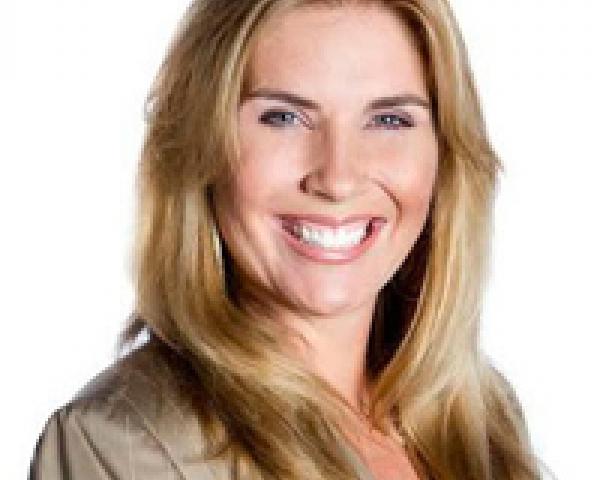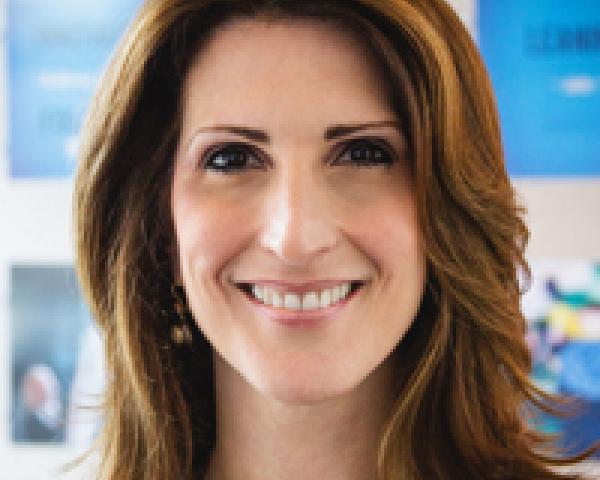ERM Is Ignoring 4 Key Tasks
In response, insurers should take full advantage of stress testing, a valuable but underused risk management tool.

In response, insurers should take full advantage of stress testing, a valuable but underused risk management tool.

Get Involved
Our authors are what set Insurance Thought Leadership apart.
|
Partner with us
We’d love to talk to you about how we can improve your marketing ROI.
|

Henry Essert serves as managing director at PWC in New York. He spent the bulk of his career working for Marsh & McLennan. He served as the managing director from 1988-2000 and as president and CEO, MMC Enterprise Risk Consulting, from 2000-2003. Essert also has experience working with Ernst & Young, as well as MetLife.
Yet an outdated law keeps New York consumers from taking advantage of a convenience that millions of other drivers already enjoy.

“Hail a gypsy cab, take me down from Harlem to the Brooklyn Bri-i-i-i-idge…”Can you hear it? There are just certain things that jump to our minds when we think of New York. I think of hot dogs, Central Park, awesome shopping, coffee shops, marquee lights on Broadway and “bouquets of sharpened pencils” (yet another New York reference for you movie buffs). What else comes to mind? Taxis… lots and lots of yellow taxis. In the era of the sharing economy, that also means lots and lots of Uber and Lyft drivers. But did you know that an outdated law is keeping New York consumers from taking advantage of a convenience that millions of drivers in other states already enjoy? In New York, a law requires consumers wanting to sign up for new auto insurance coverage to first have their vehicles inspected by their insurance companies. The law was enacted in the 1970s and was designed to protect against insurance fraud. These days, instead of preventing fraud, the law mostly produces frustration. Individuals must have their vehicles physically inspected by a licensed insurance agent or bring them to an inspection site before they can activate their auto insurance coverage. This inspection requirement is ON TOP of the annual inspection required for all New York vehicles. So, someone who owns multiple vehicles could potentially be required to do multiple inspections throughout the year! See also: On-Demand Workers: the Implications What else does this mean exactly? Old Technology for New Times Well, for starters, a lot of headaches, hassles and inefficiency for consumers. They frequently report:
Get Involved
Our authors are what set Insurance Thought Leadership apart.
|
Partner with us
We’d love to talk to you about how we can improve your marketing ROI.
|

Robin Roberson is the managing director of North America for Claim Central, a pioneer in claims fulfillment technology with an open two-sided ecosystem. As previous CEO and co-founder of WeGoLook, she grew the business to over 45,000 global independent contractors.
Despite heightened awareness, most companies say they don’t have a clearly defined cyber risk strategy.

Get Involved
Our authors are what set Insurance Thought Leadership apart.
|
Partner with us
We’d love to talk to you about how we can improve your marketing ROI.
|

Byron Acohido is a business journalist who has been writing about cybersecurity and privacy since 2004, and currently blogs at LastWatchdog.com.
Can insurers use their pooling "superpowers" to create an option to access technologies that have not been invented yet?

Get Involved
Our authors are what set Insurance Thought Leadership apart.
|
Partner with us
We’d love to talk to you about how we can improve your marketing ROI.
|

Maria Ferrante-Schepis is the managing principal of insurance and financial services innovation at Maddock Douglas.
The planned surge in U.S. infrastructure investment creates opportunities for builders and insurers -- but also new risks.

Get Involved
Our authors are what set Insurance Thought Leadership apart.
|
Partner with us
We’d love to talk to you about how we can improve your marketing ROI.
|

Adrian Pellen is part of the U.S. Construction Practice at Marsh and is responsible for ensuring Marsh delivers its world-class risk advisory and strategic services to developers and contractors pursuing new infrastructure projects across North America.
The U.S. has let infrastructure investment languish for so long that some 50,000 dams are now past their designated lifespans.

If you'll allow me to be parochial for a moment, I'll start this week with the Oroville Dam, which is 75 miles due north of me. You've probably seen or heard some reference to the dam over the past few days because a series of severe storms in California has caused serious structural problems at what is the tallest dam in the U.S. and forced the evacuation of almost 200,000 people. You may hear more about the dam, too, because California is expecting another major series of storms. While dam operators are now letting water out as fast as they can -- faster than the average flow at Niagara Falls -- they felt for a time that they had to slow because erosion has split the main spillway, and they worried that further erosion would be catastrophic. Water has already "overtopped" a section of the dam and cascaded down a heavily forested area designated as the emergency spillway. If the water level continues to rise, so much will pour down the mountainside that the Feather River may wash out downstream dams and levees and a major highway that serves Northern California.
I'm far enough away that I'm in no danger of having a wave wash through my living room window, but I'm still concerned. The U.S. has let infrastructure investment languish for so long that some 50,000 dams are now past their designated lifespans, roughly two-thirds of those in operation in the country. One of those past its expiration date is -- you guessed it -- the Oroville Dam. Environmental groups and local officials warned about potential problems a dozen years ago, but dam managers dismissed the worries.
As the problem upriver developed, I was delighted to receive a really insightful article about why so many people and organizations don't prepare adequately for possible disasters. I hope you'll read it here. I also hope you'll take it to heart, because I believe we need to start really thinking about the catastrophes that can occur because of, among other things, crumbling infrastructure and climate change.
The article shows all the psychological mechanisms that encourage people to defer preparation -- we've had years and years of drought in California, so why worry about a really wet winter last year and a crazy-severe winter this year? But we in the world of risk management and insurance are supposed to have the data, the experience and the discipline to help others prepare -- so that hundreds of thousands more people, like my poor neighbors to the north, don't wind up in camps in winter while they wait to find if their homes will be washed away. I hope we rise to the occasion.
Cheers,
Paul Carroll, Editor-in-Chief
Get Involved
Our authors are what set Insurance Thought Leadership apart.
|
Partner with us
We’d love to talk to you about how we can improve your marketing ROI.
|

Paul Carroll is the editor-in-chief of Insurance Thought Leadership.
He is also co-author of A Brief History of a Perfect Future: Inventing the Future We Can Proudly Leave Our Kids by 2050 and Billion Dollar Lessons: What You Can Learn From the Most Inexcusable Business Failures of the Last 25 Years and the author of a best-seller on IBM, published in 1993.
Carroll spent 17 years at the Wall Street Journal as an editor and reporter; he was nominated twice for the Pulitzer Prize. He later was a finalist for a National Magazine Award.
Many insurers are considering carve-outs or IPOs as sellers, and there are even more looking to build market share by acquiring.

Get Involved
Our authors are what set Insurance Thought Leadership apart.
|
Partner with us
We’d love to talk to you about how we can improve your marketing ROI.
|

John Marra is a transaction services partner at PwC, dedicated to the insurance industry, with more than 20 years of experience. Marra's focus has included advising both financial and strategic buyers in conjunction with mergers and acquisitions.
...by fulfilling our traditional promise. Agents can stay relevant well into the future, but only if they truly deliver peace of mind to clients.

“The future is here, it’s just not very evenly distributed.” — William GibsonIn his 2003 book, “The Slow Pace of Fast Change,” author Bhaskar Chakravorti highlighted how powerful innovations in technology and business often suffer slow adoption. He illustrated how, in a networked world, individuals, companies and regulators are all interacting, watching each other, guessing and second-guessing which investment choice is right. Often, the conservative choice is hard to dislodge. But when alternatives reach a tipping point, change can be dizzyingly fast. Insurance, a traditionally slow-changing industry, has more than its fair share of headwinds to innovation. It is a fragmented industry, compounded by: state-by-state regulation; an extended value chain of retail and wholesale distributors through carriers; reinsurers and capital markets; and a plethora of orbiting service providers. This fragmentation has inhibited transformational change and led to a prevailing view that, through continuous improvement, industry players can always adapt and catch up to change. This fragmented marketplace has traditionally protected incumbents. However, predators are circling. Insurtech, Silicon Valley-backed software companies, are looking to deliver insurance solutions. They observe the structural inefficiencies in the industry — that agents and brokers work through every day — and see red meat, tantalizing opportunities for new and disruptive paradigms. How are traditional agencies to adapt and stay competitive in the face of this threat? Disrupting the distribution model You can see the signs of coming disruption. Usage-based telematics (Progressive), peer-to-peer insurance models (Friendsurance), e-aggregators (PolicyGenius) and Internet of Things (IoT) companies are offering insurance coverage embedded with their products (autonomous vehicles). In 2015, venture capital companies invested $2.65 billion in insurtech with the intention of, at the very least, shaking things up. See also: 2017: A Journey Toward Self-Disruption Some see the traditional agency model as living on borrowed time. Debates rage about the unique role and value that agents and brokers provide. When they really want to scare us, potential disruptors talk about “the Uber of insurance,” promising to transform the role of the agent to create a completely different customer experience. This transformation is most advanced in personal lines where digitalization is facilitating straight-through processing and is reducing the need for human intervention in policy processing. By analogy, think of people doing their own taxes online, where data-drive technology and intuitive user interfaces supplant human-driven, client intimacy. But more complex commercial lines are not immune to disruptive transformation. Digitalization, automation, analytics, embedded devices and telematics provide powerful tools to be integrated into new service and business models that can considerably change the value proposition for insureds. How the customer defines “the job to be done” While highly attuned to these possibilities, I align with those who see the role of independent agents remaining relevant well into the future. But there is a caveat: agents must truly and expansively fulfill their core promise to provide “peace of mind” to their insureds. I am often struck by the notion that the “job to be done” by retail agents is to provide “peace of mind.” It is not enough to provide a piece of paper and a commitment to represent the client’s interests in the event of a loss. Increasingly, peace of mind means providing information seamlessly, when and where the client wants it, via a user-friendly interface, backed by data and tools to help prevent losses (rather than simply mitigate or retrieve them). One agency principal recently noted that it was imperative “to make the friction points go away” in the risk management process. But this is only the starting point. Consider your organization. How much of your employees’ time is devoted to increasing your clients’ peace of mind? Or even understanding what peace of mind really means for your clients? By contrast, how much time is spent on “compliance activities,” busy work and redundant processing? While most insurance professionals are highly service-oriented, most insurance activities are not — tipping the scale in the opposite direction. Developing client intimacy and institutionalizing that knowledge into daily practices is critical. This is because agents and brokers have what direct writers, software companies and device manufacturers will struggle to attain: trusted adviser relationships. This is the key asset to protect and enhance. How to make your organization future-ready You might think the first thing to do after reading this article is investing in new online systems, portals and user-experience consultants. This is secondary. The first thing to do is get your operational house in order. Look internally at your service operations and understand how aligned your business processes are to your business strategy. This may seem counterintuitive, but, to improve customer intimacy and deliver peace of mind, focus first on internal operations. Streamlining operations is the foundation of the most successful innovation programs. Simplifying operational complexity increases transparency and strategic focus. Reducing process variability eliminates waste and inefficiency. Most agency leaders don’t realize how much time producers and service teams spend on redundant and non-core activities. This time can be reinvested in deepening an understanding of client preferences, purchase habits and risk profiles that will ultimately have an impact on loyalty and retention and will enhance the new business value proposition. Creating internal capacity is not rocket science. It is achieved through operational best practices such as increasing strategic visibility so employees can better align priorities; segment accounts; standardize ad hoc tasks; source the right work to the right person; and improve the operational IQ of your people. Operational analytics additionally provide insights into which accounts or lines of business are profitable, which are dilutive and what to do where there are gaps. Where once employees were under pressure to meet client needs, compete on price, put out fires and clean up backlogs, new, internal capacity will be discovered and directed to writing more profitable accounts, improving customer intimacy and innovating around digital channels and data-driven risk-prevention business models. See also: Insurance Disruption? Evolution Is Better While the threats of disruption from insurtech are real, the outcome is not a foregone conclusion. Today's agency will suffer decline, but tomorrow's agency is within our grasp — not by saddling an already-complex operational environment with more sales people and systems but by building an organization on a foundation of operational and process excellence. In doing so, the agents and brokers of tomorrow will assert their relevance and long-term competitiveness by delivering their clients the promise of peace of mind more expansively than ever before. What does peace of mind mean to your organization?
Get Involved
Our authors are what set Insurance Thought Leadership apart.
|
Partner with us
We’d love to talk to you about how we can improve your marketing ROI.
|

Dan Epstein is CEO of ReSource Pro, where he is working to reimagine the way insurance organizations deliver services. Epstein has led ReSource Pro from startup to nearly 3,000 employees.
We all know that change can bring painful challenges. Here are steps that insurers can take to stay on course.

Get Involved
Our authors are what set Insurance Thought Leadership apart.
|
Partner with us
We’d love to talk to you about how we can improve your marketing ROI.
|

William Freitag is executive vice president and leads the consulting business at Majesco. Prior to joining Majesco, Freitag was chief executive officer and managing partner of Agile Technologies (acquired by Majesco in 2015). He founded the company in 1997.
Three opportunities present themselves, in UBI, in leveraging external data and in exploring real-time data.

Get Involved
Our authors are what set Insurance Thought Leadership apart.
|
Partner with us
We’d love to talk to you about how we can improve your marketing ROI.
|

Cathy Chang is a senior director of sales and client success at Silicon Valley Data Science. She is passionate about helping organizations realize their potential by emerging from the complexity of big data ecosystem with the precise use of analytics and data technologies.